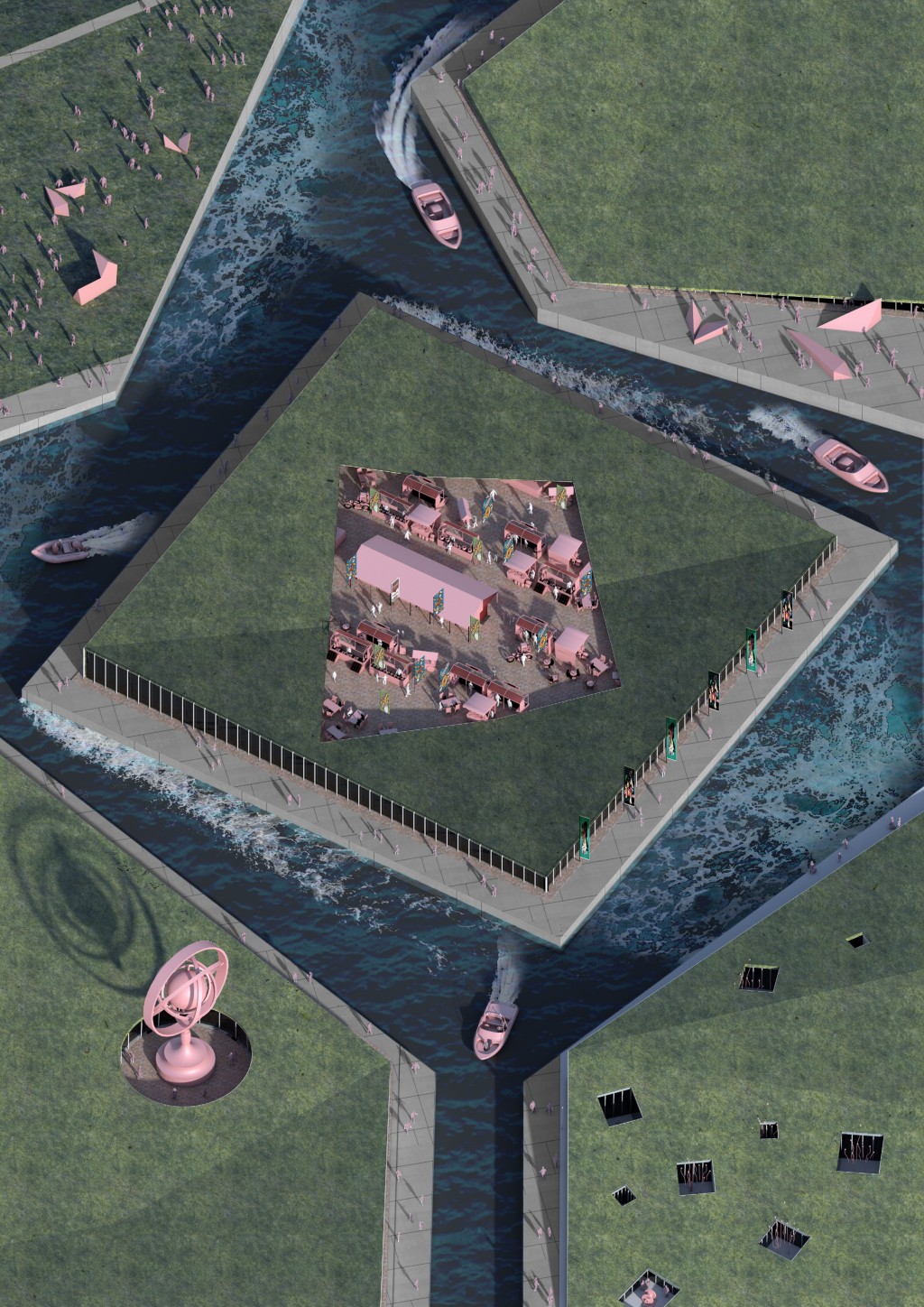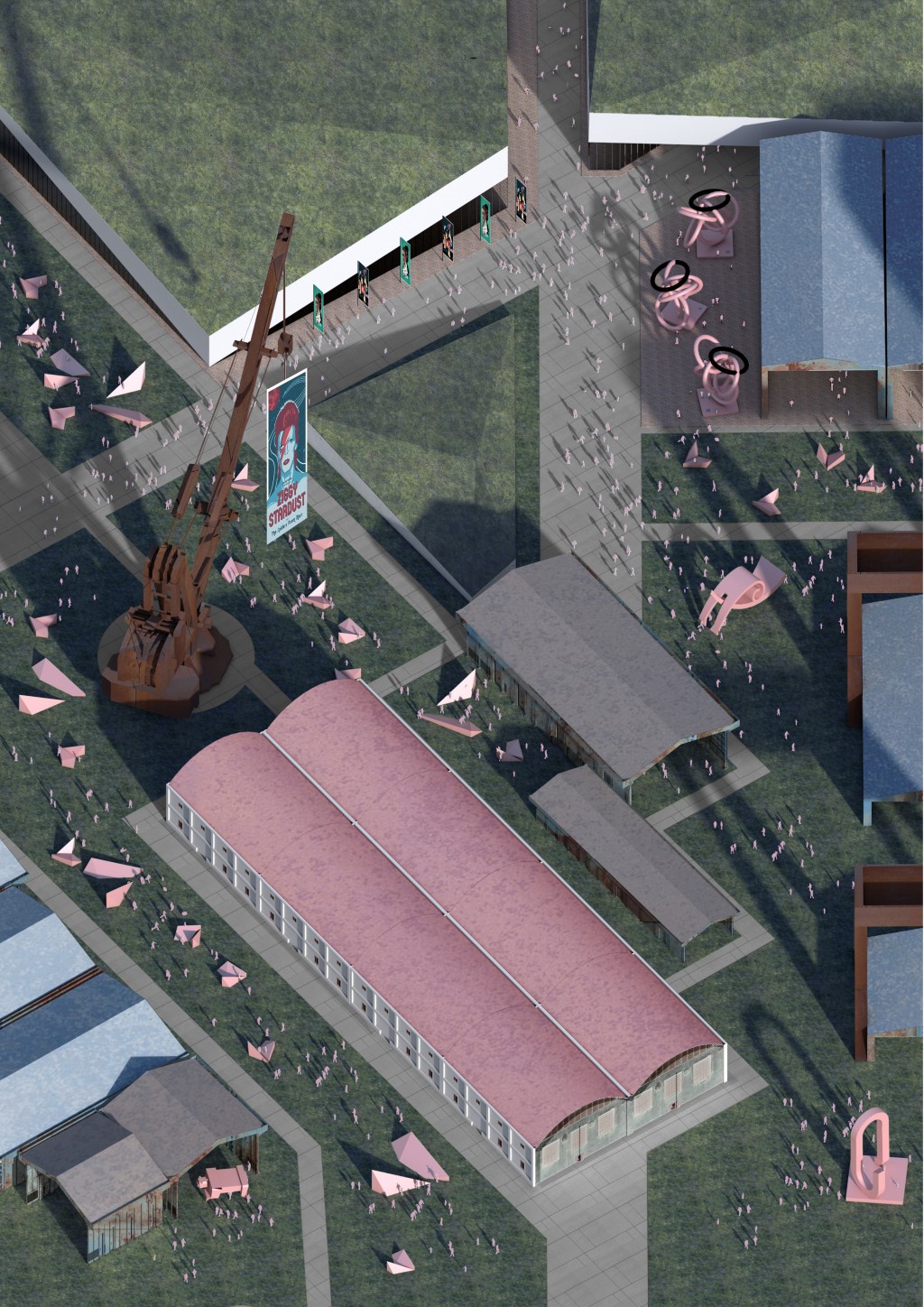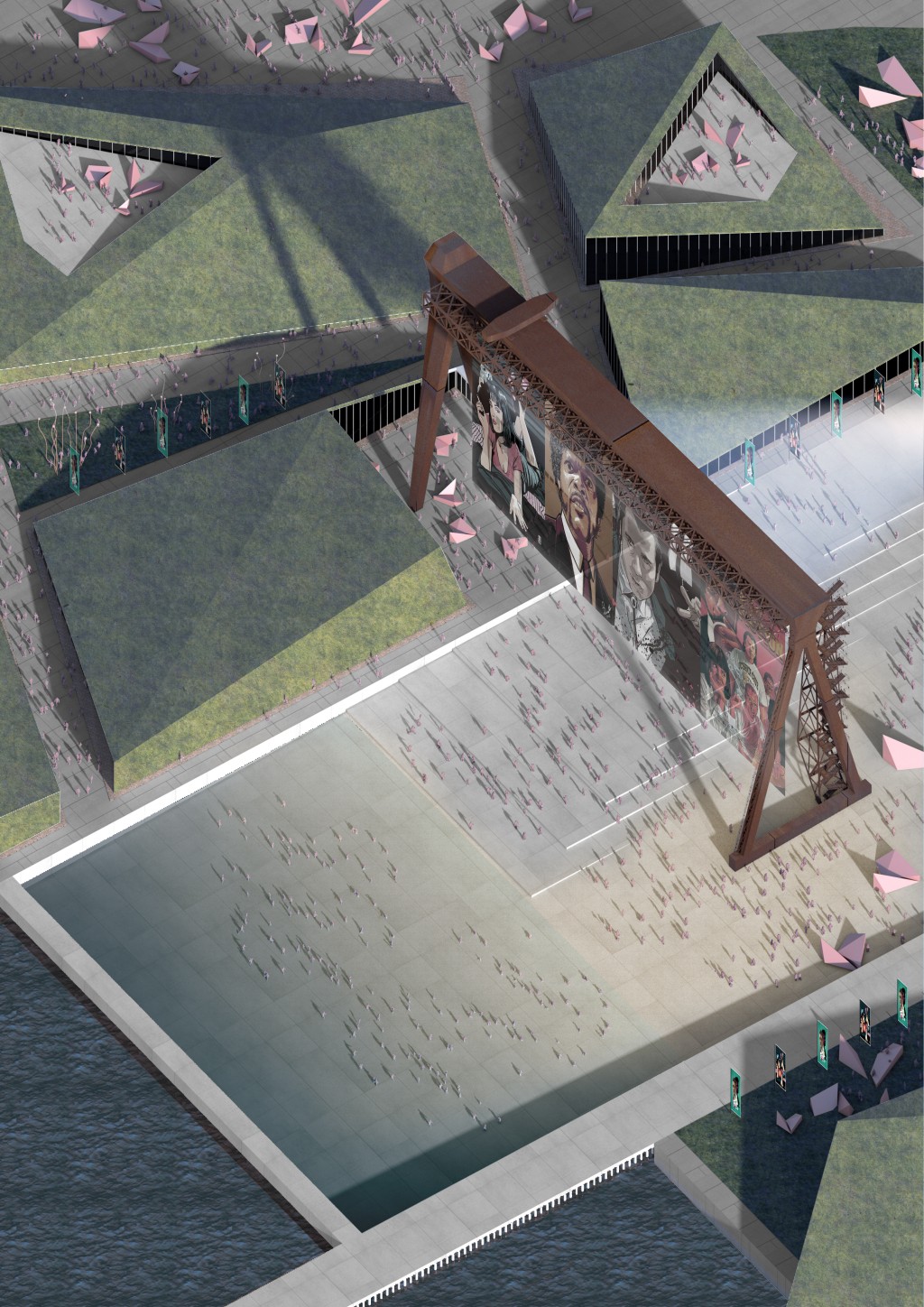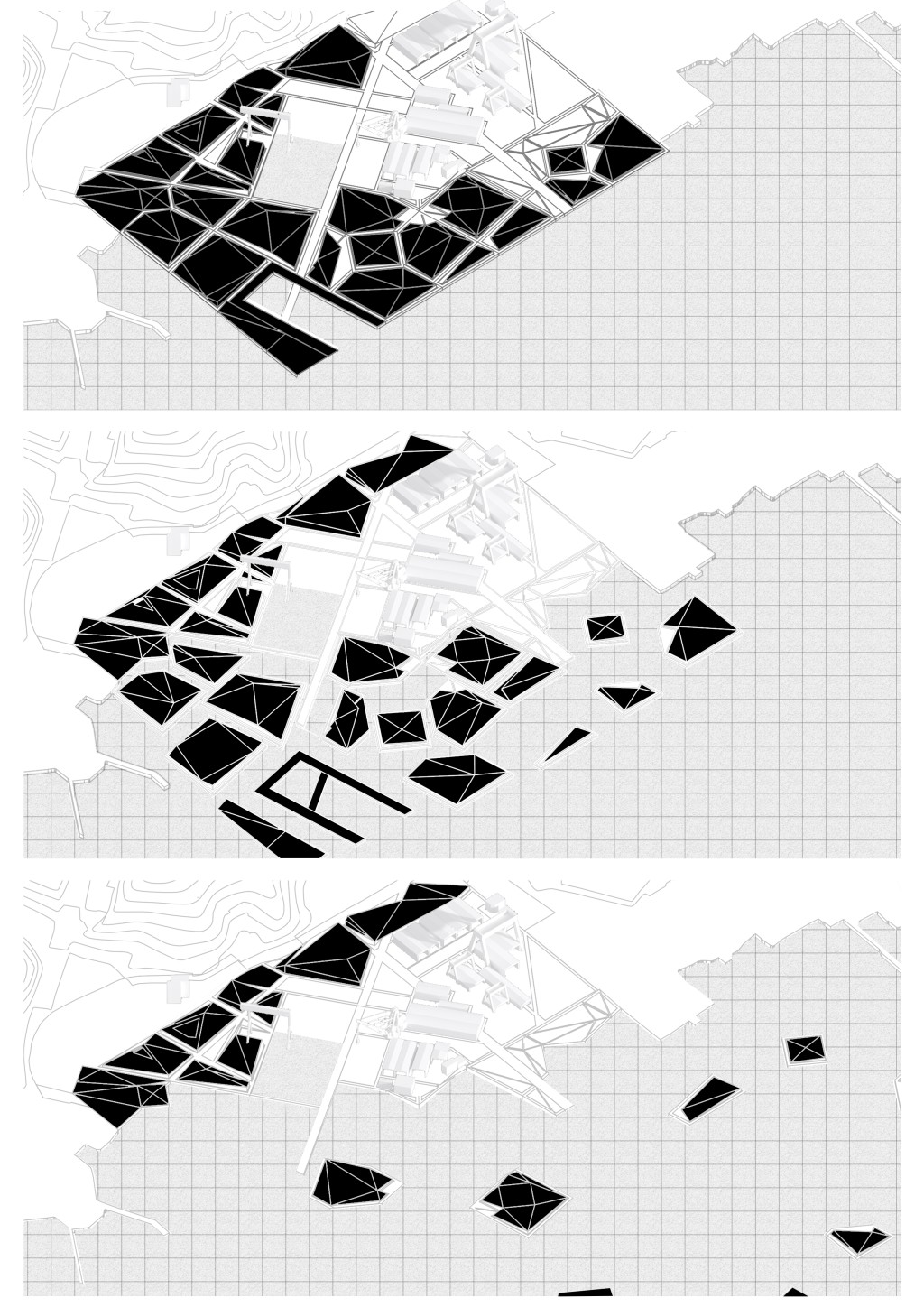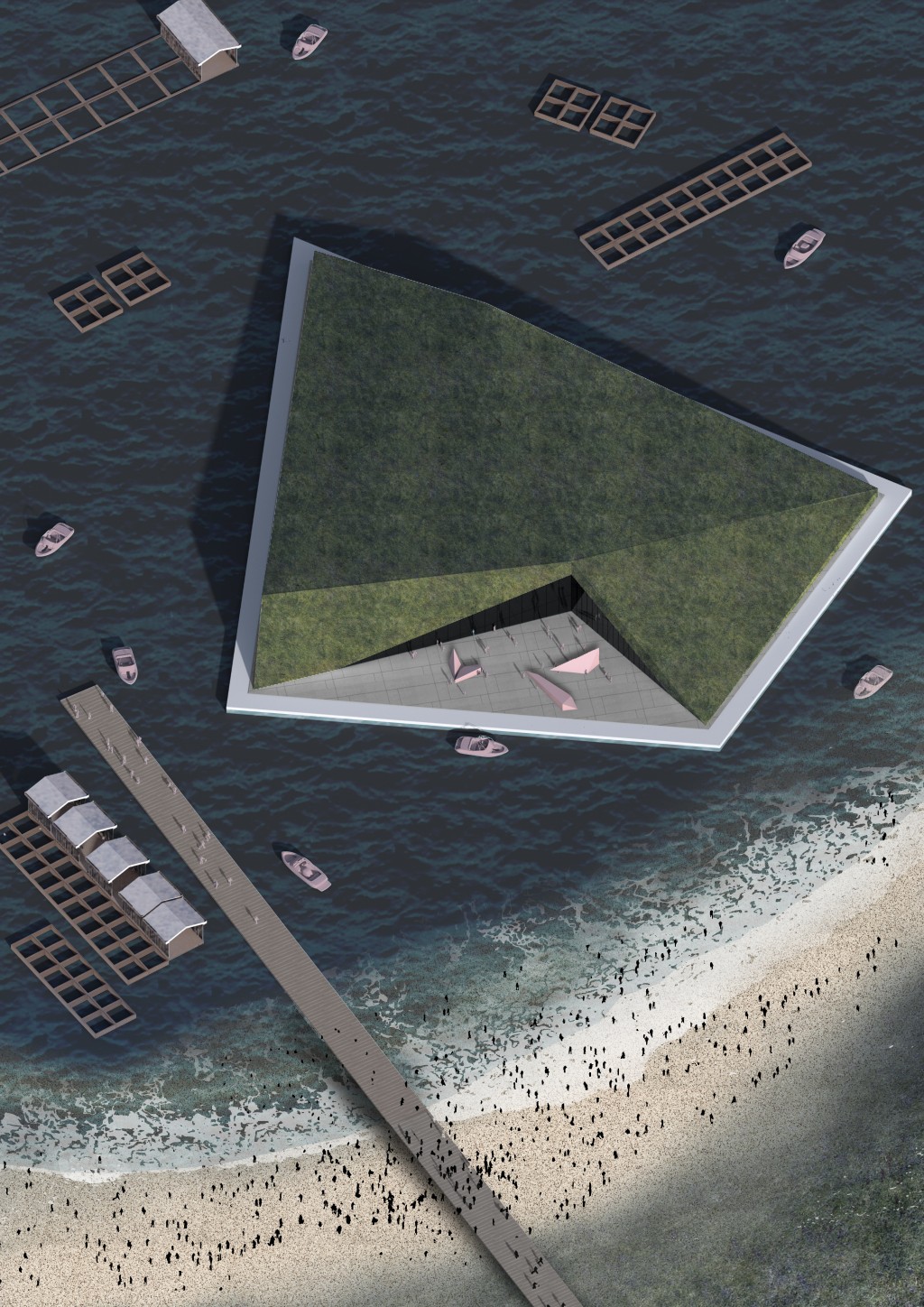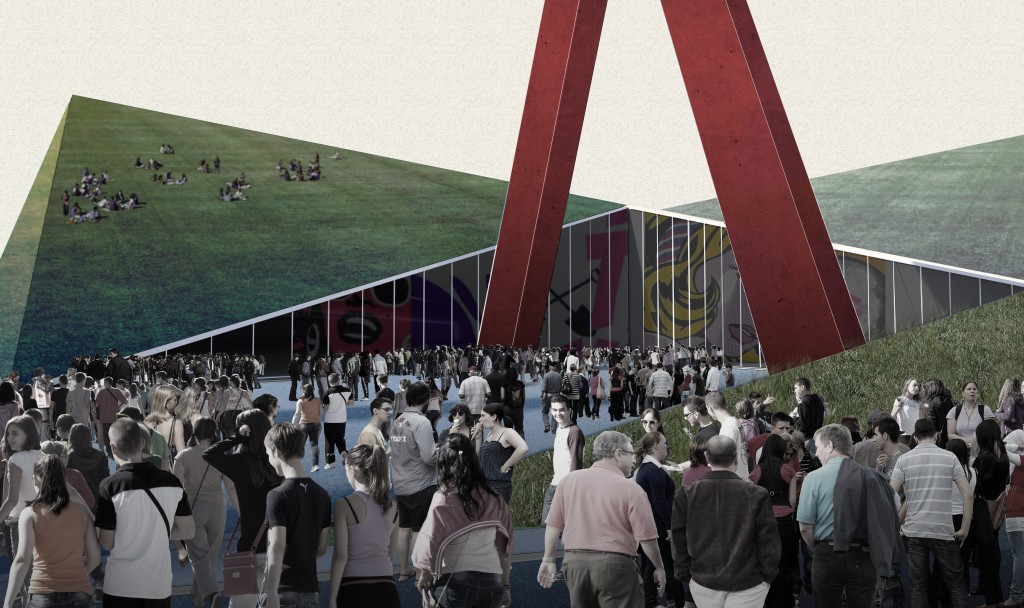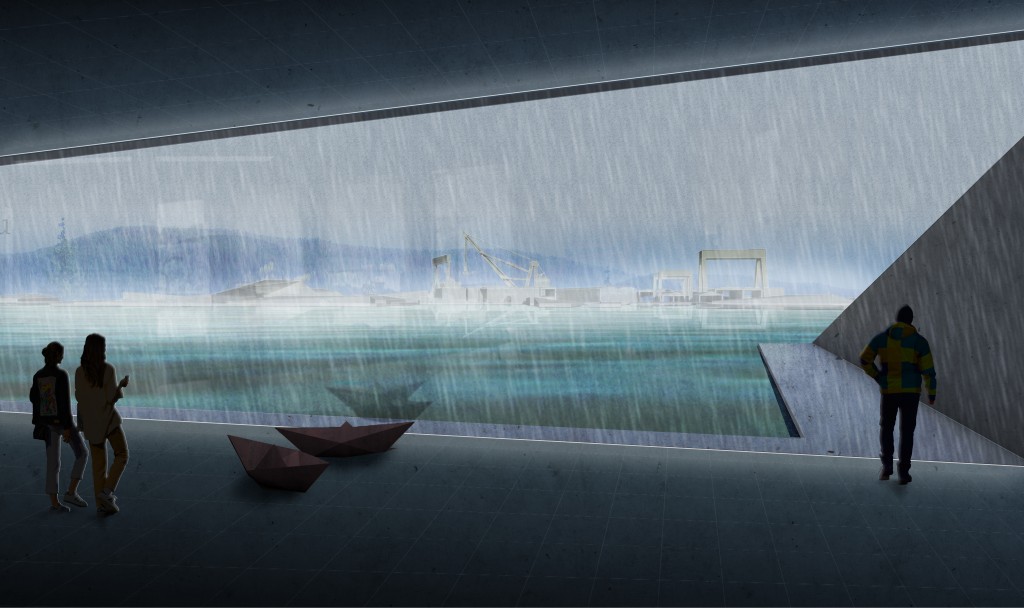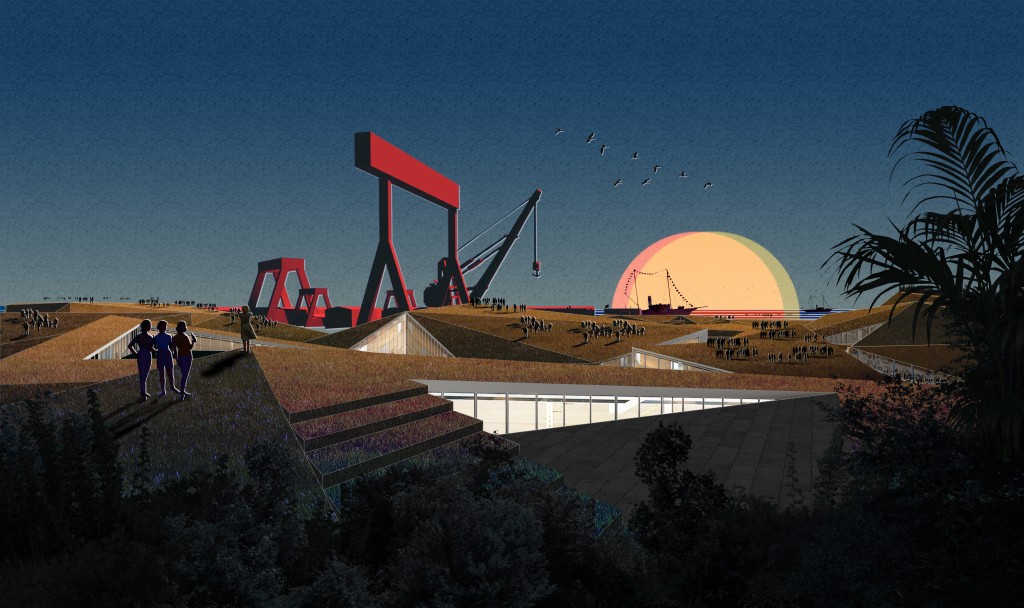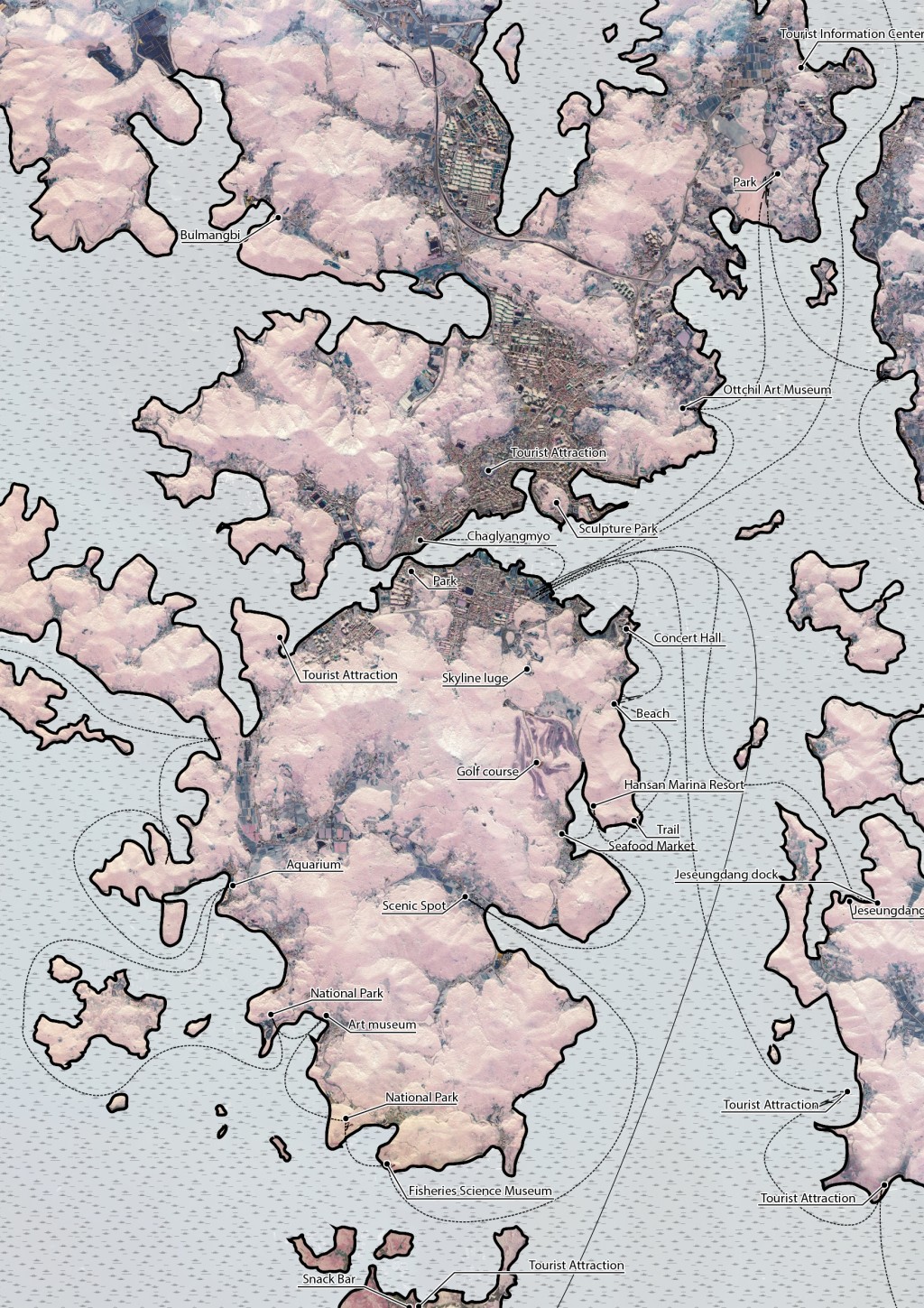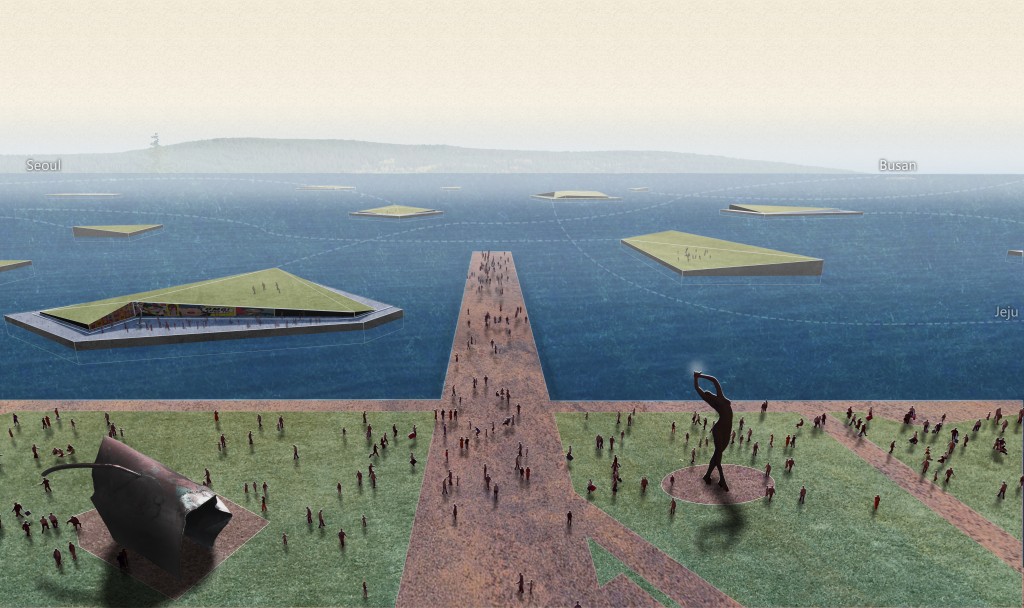Urban Regeneration of Tongyeong Dockyard
Urban Regeneration of Tongyeong Dockyard
Tongyeong Dockyard is located on the Goseong Peninsula, characterized by islets, bays, straits, and other coastal formations. In its heyday these have contributed to it being a regional powerhouse in marine industries. However, its original advantages have become obstacles in transportation and communication – essential elements of economic growth of tourism and tertiary industries. The regeneration of Tongyeong must embrace a regional holistic approach. In the age of climate change, how do we focus limited resources to revitalize this small area, but have meaningful and maximum impact to its surrounding archipelago without harming the delicate environment? With global warming and rising sea levels, how do you design a major urban attraction in a coastal area such as Tongyeong? A large-scale intervention in a single area will diminish the attractiveness of surrounding towns and islands, leading to their eventual demise. A full-on monolithic scheme is incompatible with the threat of sea level rise and tidal wave storms. In the event of catastrophe, the entire site would be paralyzed and inhospitable, and fail in its objective to attract visitors.
Our scheme rejected a traditional monolithic top-down design, and instead developed a fleet of floating structures that house museums, galleries, tourist amenities, and performance centers. When “docked” at home in Tongyeong Harbor, they form an important cultural center that is the backbone of the waterfront development. Several times a year, the structures travel to various coastal villages in the archipelago. This does two things: Decentralize tourist programs to where they matter the most and have most to offer, and to create a new form of hyper-flexible itinerary that changes over time.
Network and relationships
Tongyeong City as the epicenter of economic and cultural activities. However, its urban decline is made difficult because of limited area of infrastructure expansion and a declining shipbuilding industry and its lack of diversification.
Made in Tongyeong!
Meaningful investment spending, not in the form of bubble real estate, but in job creation for expert skills already prevalent in Tongyeong region. This is a great incentive to upgrade existing skills to the latest in technology and construction, allowing for a new generation of builders to flourish in Korea.
Challenges become Opportunities
Goseong Peninsula is characterized by islets, bays, straits, and other coastal formations. In its heyday these have contributed to it being a regional powerhouse in marine industries. However, its original advantages have become obstacles in transportation and communication – essential elements of economic growth of tourism and tertiary industries. This urban/regional strategy confronts this handicap, by embracing the peninsula’s legacy and rethinking communication infrastructure as generator of growth. Its location is an ideal economic and cultural center as it links not just all marine routes but also tourism traffic.
When fully incorporated, the floating structure routes will be indistinguishable from regular marine traffic. The floating structures are divided into 3 groups: inner, middle, and outer. Each group is divided based on their proximity to the existing dock infrastructure, hence the frequency in which they leave Tongyeong is organized depending on the site’s agglomeration pattern.
Task
Develop an urban resilience plan for a disused former shipyard in Tongyeong, Korea, and integrate site characteristics into a long-term economic plan.
-
Client
Korea Land & Housing Corporation
-
Location:
Tongyeong, South Korea
-
Year:
2018
-
Size:
185,000 m2
-
Status:
Competition 3rd Prize
Share project
